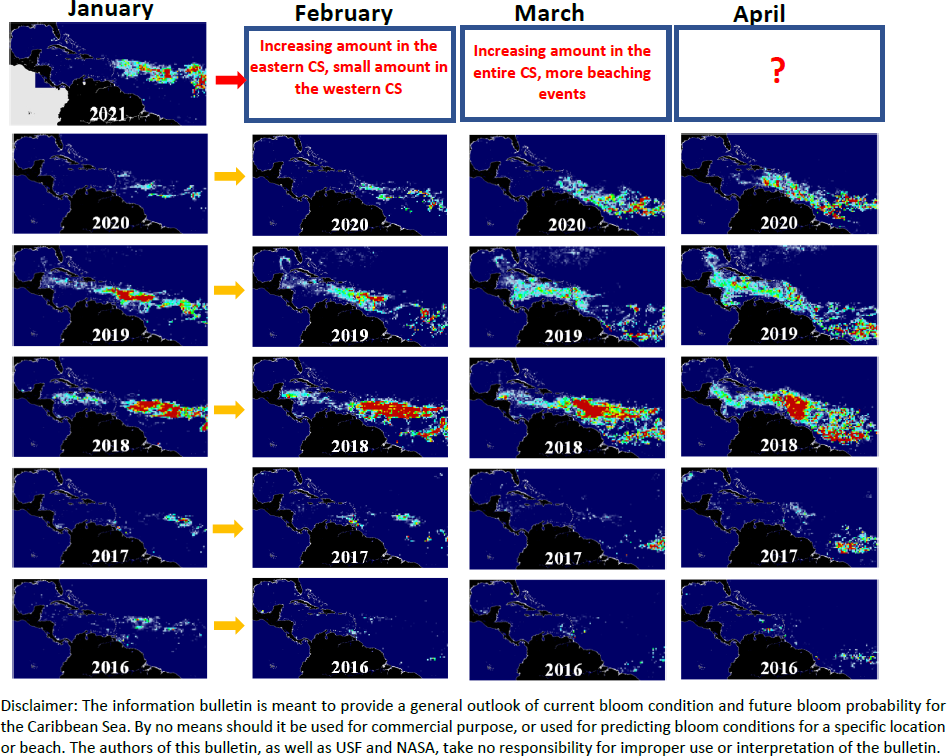The maps above show Sargassum abundance, with warm colors representing high abundance. In January 2021, the Sargassum amount continued to increase across the central Atlantic. Large amounts of Sargassum were observed in both the Central West Atlantic (CWA, i.e., the region east of the Lesser Antilles in the maps below) and the Central East Atlantic (CEA). As predicted back in December 2020, some of the Lesser Antilles Islands (e.g., Guadeloupe, Dominican Republic) in the eastern Caribbean Sea (CS) appear to have experienced small amounts of Sargassum in January 2021. Yet the following regions are still largely free of Sargassum mats: the Gulf of Mexico (GoM), Florida Straits, and western CS. In all regions combined, the total Sargassum amount increased from ~3.2M tons in December 2020 to ~5.1 million metric tons in January 2021, similar to that in January 2019 but much higher than all previous January months except January 2018.
Looking ahead, the eastern CS will experience moderate to large amounts of Sargassum starting February 2021, while the GoM should still be free of large mats of Sargassum. Some of the Lesser Antilles Islands may experience beaching events on both their windward and leeward beaches. This situation may continue into summer, and the overall bloom intensity might be similar to that of 2019.
We will keep a close eye on how Sargassum in the CS and the tropical Atlantic may evolve in the next two months. More updates will be provided by the end of February 2021, and more information and near real-time imagery can be found under the Sargassum Watch System (SaWS,
https://optics.marine.usf.edu/projects/saws.html).
Outlook of 2021 Sargassum blooms in the Caribbean Sea and Gulf of Mexico* Jan 31st, 2021, by the University of South Florida Optical Oceanography Lab



